Places to Play With Baby Elephants in South Africa
At Go2Africa, we don't recommend anything to our clients that we haven't tried ourselves – it's our 'we know because we go' policy in action. This is especially important when it comes to recommending something as sensitive as an animal encounter. By 'animal encounter', we don't mean observing animals on general game-viewing experiences, but rather an interaction in which the animal is the main focus of an activity. A gorilla trekking excursion and visiting an elephant sanctuary or orphanage are good examples.
When it comes to enjoying an ethical encounter at an animal sanctuary or orphanage, it's paramount that the animals are handled compassionately, motivated by rewards or treats and, if they are housed, that their enclosures are spacious, safe and as natural as possible – and they are not chained up. Our partners on the ground who facilitate animal encounters are hand-picked and constantly reviewed based on feedback from our clients and our own regular travels.
What Makes it Ethical?
What Makes an Animal Interaction Ethical?

Interactions with visitors must always be sensitive to the animals' welfare.
If the animals are confined at a research or rehabilitation facility such as an elephant sanctuary, they must have plenty of time to rest between guest encounters. This means being at ease and free to interact naturally and safely with other animals in an appropriate environment.
Habituation (or making wild animals used to humans and not frightened of us) must be overseen by qualified individuals. The tourism income from wild encounter safaris should contribute to the conservation of the species and its habitat by raising public awareness, supporting research or contributing directly to protecting the species through tourism levies, park fees or permits.
Encounters involving rescued animals – injured, orphaned or wildlife that would otherwise be culled – must incorporate rehabilitation with an aim to release the animal back into the wild or, if release is not possible, lifelong care in humane circumstances.
Do not assume that the owners of an animal facility are conservationists merely because they work with wild animals. Sadly, many facilities are purely for profit.
Encounters With Predators
A Word on Encounters With Predators
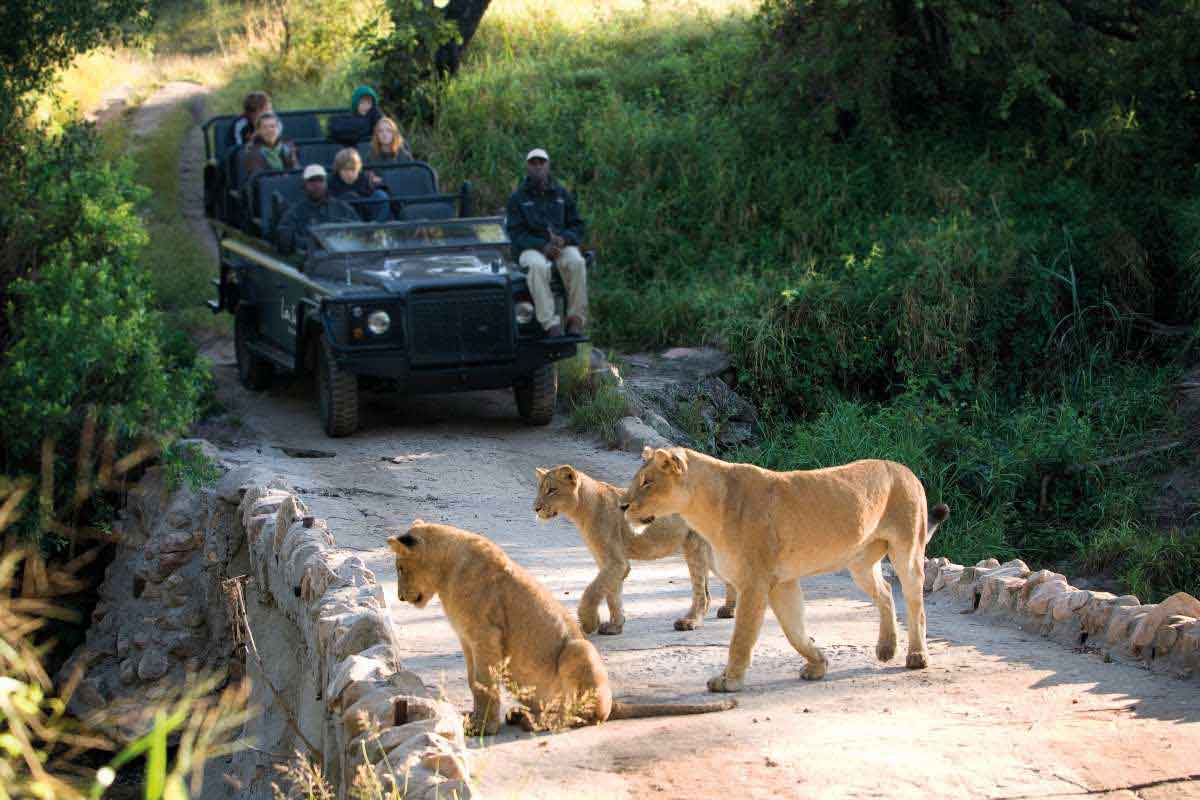
We do not support any encounter that allows tourists to touch baby predators like lions and leopards. These cubs can never be rehabilitated back into the wild and are doomed to a life of confinement in circuses, zoos, unregulated private collections or, worst of all, being sold to the canned hunting industry. Separating a tiny cub from its mother and forcing it to endure hours of petting by many different human strangers is cruel, inhumane and unethical – especially since the cub ends up being sold off to unregulated buyers around six months of age when it's too big, strong and potentially dangerous to be forced to endure the petting.
We also do not support encounters with grown predators, like walking with lions. Once again, these animals are habituated to humans, may be drugged to keep them docile, and may end up being in the crosshairs of a trophy hunter's rifle. Because they have been handled constantly by humans since they were new-borns, they do not fear us and, in fact, trust us to provide food because they cannot hunt for themselves.
Performing animals quickly learn to behave in a certain way to access food from us – they are kept slightly hungry to ensure compliance and the desired behaviour.
When male lions have full manes, they are sold to hunters in an industry known as 'canned lion hunting'. Because they have never lived in the wild, their faces and ears do not bear the scars from fights with other lions or hyenas, or scratches from thorns. Their 'perfection' makes them desirable to hunters. They are shot in their pens or in a fenced area – hence the term 'canned hunting' (this also makes it easier for the shooter, who has paid a huge sum of money for the lion's head, to get a direct hit). They do not have a sporting chance of escape. Feeding a grown male is expensive and his captors would rather get the US dollars from his death.
This distressing chain of events often starts with the decision to cuddle a lion cub. Supporting this activity perpetuates a cruel and unethical industry.
Elephant Sanctuaries
Ethical Animal Encounters in Africa
1. Visit an Elephant Sanctuary
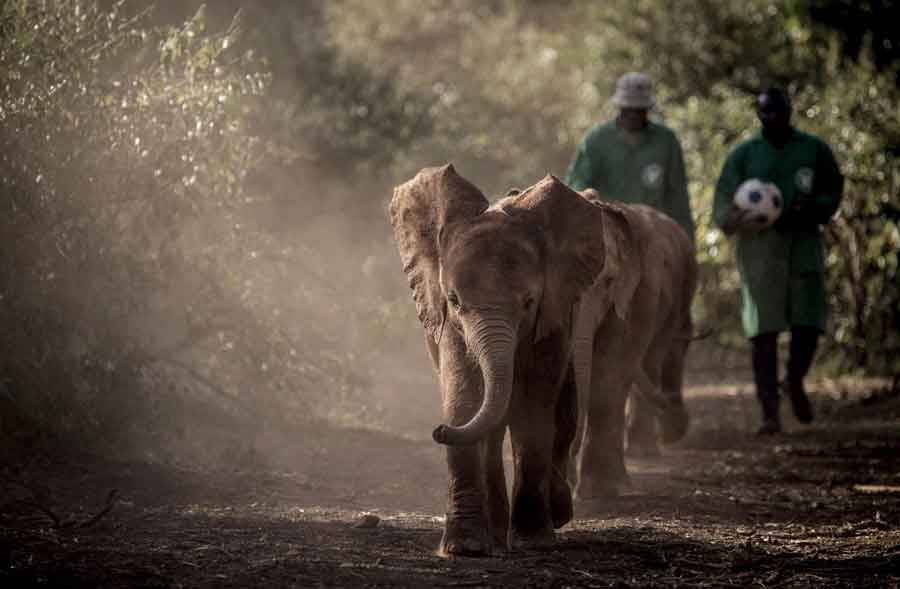
Kenya
The Sheldrick Wildlife Trust's Orphans' Project rescues, cares for and rehabilitates orphaned elephants from all over Africa. You can see these boisterous youngsters being washed, exercised and fed before they are old enough to be released into the wild. Elephants are very intelligent and social – these little ones love their human carers and, like naughty toddlers, enjoy pranks like stealing the cap off a keeper's head while he is talking to visitors! The elephant sanctuary is also a refuge for highly endangered black rhinos orphaned by poachers. The Sheldrick Wildlife Trust is heavily involved in anti-poaching, snare clearing and community outreach projects.
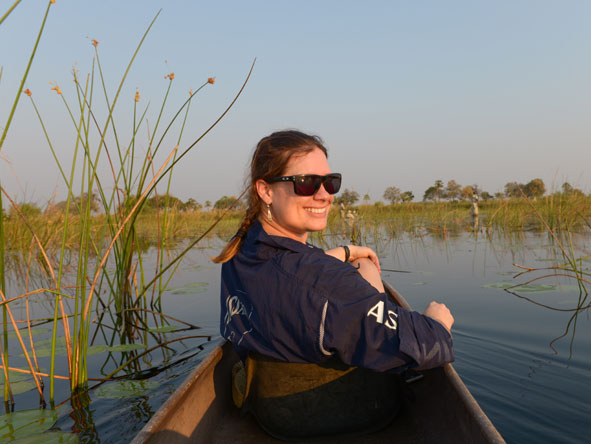
The Sheldrick Wildlife Trust has a 'public viewing' from 11:00 to 12:00 daily, which can get very busy with loads of visitors. For a more intimate encounter (no more than 20 people in a group), I highly recommend the 'private viewings' at 15:00. You can walk among the baby elephants with their keepers. It's a truly amazing experience, especially if you've adopted one of the orphans. It's vital to book this encounter well in advance, as there is only one slot available per day. – Emma Hill, Africa Safari Expert
Zimbabwe
The Wild Horizons Elephant Sanctuary and Orphanage has been a haven for orphaned and injured ellies since 1992. Adjacent to The Elephant Camp in Victoria Falls, this elephant sanctuary strives to ensure the animals have the best care and quality of life in the most natural environment. Whether during a rescue, the rehabilitation or release processes, the welfare of the elephants takes precedence at Wild Horizons. If you're an eco-conscious traveller looking for an authentic and positive elephant encounter, Wild Horizons is one of the best places where you can interact with elephants in Africa. Their 'Meet the Elephant' encounter gives visitors the opportunity to unobtrusively interact with the orphans – a truly heart-warming experience.
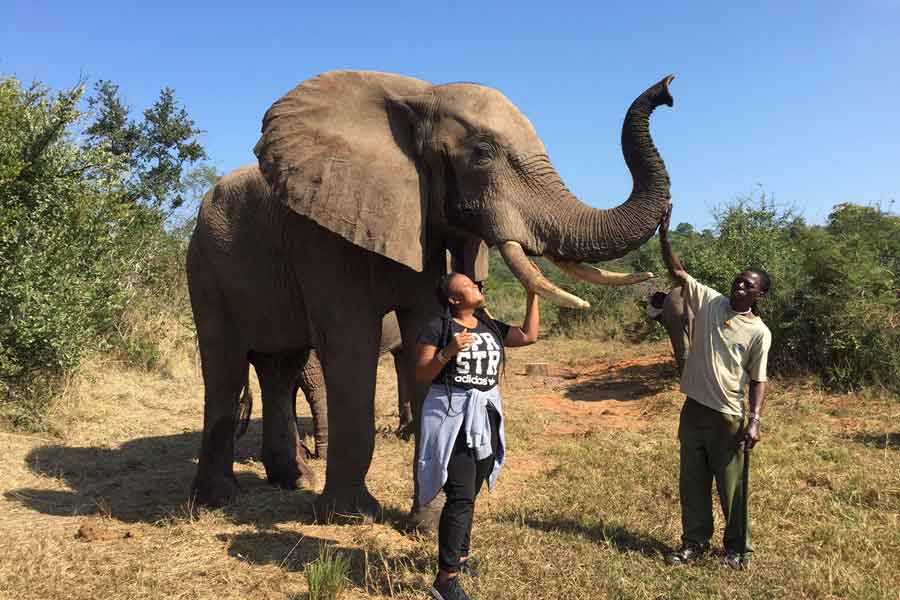
Wild Horizons Elephant Sanctuary and Orphanage strives to rescue and protect both orphaned and injured elephants. They then rehabilitate them and release as many of them as possible back into the wild. Before the actual interaction, all visitors watch a very informative video about how the orphanage began, its conservation journey and where it is now – including information on each elephant in the family. – Tankiso Ngidi, Africa Safari Expert
Breakfast With Giraffes
2. Have Breakfast With Giraffes
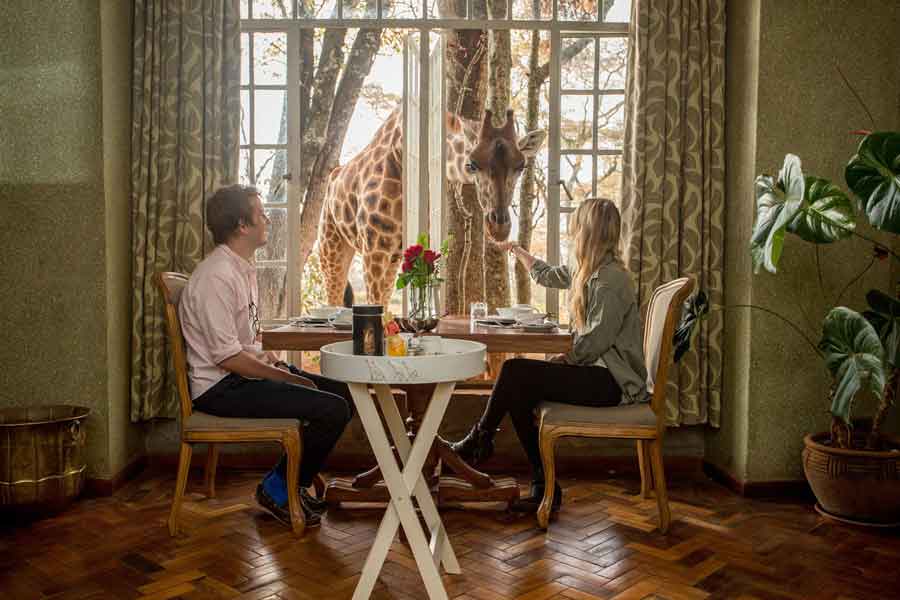
Kenya
Most people develop a soft spot for giraffe and elephants when they go on safari. Especially giraffe – these graceful, gentle creatures are as fascinating as they are beautiful. One of the most endangered sub-species is the Rothschild's giraffe, which has elegant white leg 'stockings' and creamier-coloured patches. The best place to see them is at The Giraffe Centre in Nairobi. The organisation's main purpose is to educate local schools about Kenya's wildlife and environment, as well as give all visitors an opportunity to enjoy up-close encounters with giraffes in an ethical way. You might even get close enough to get a kiss from one!
The Giraffe Manor is situated adjacent to the centre and the giraffe roam freely around this historic hotel. They are so habituated to humans that they often pop their heads through the dining room windows to see if they can lick up any giraffe treats with their huge purple tongues. It's a charming, wonderful encounter for the whole family that directly supports the conservation of the species.
Big Cats Up Close
3. See Big Cats Up Close
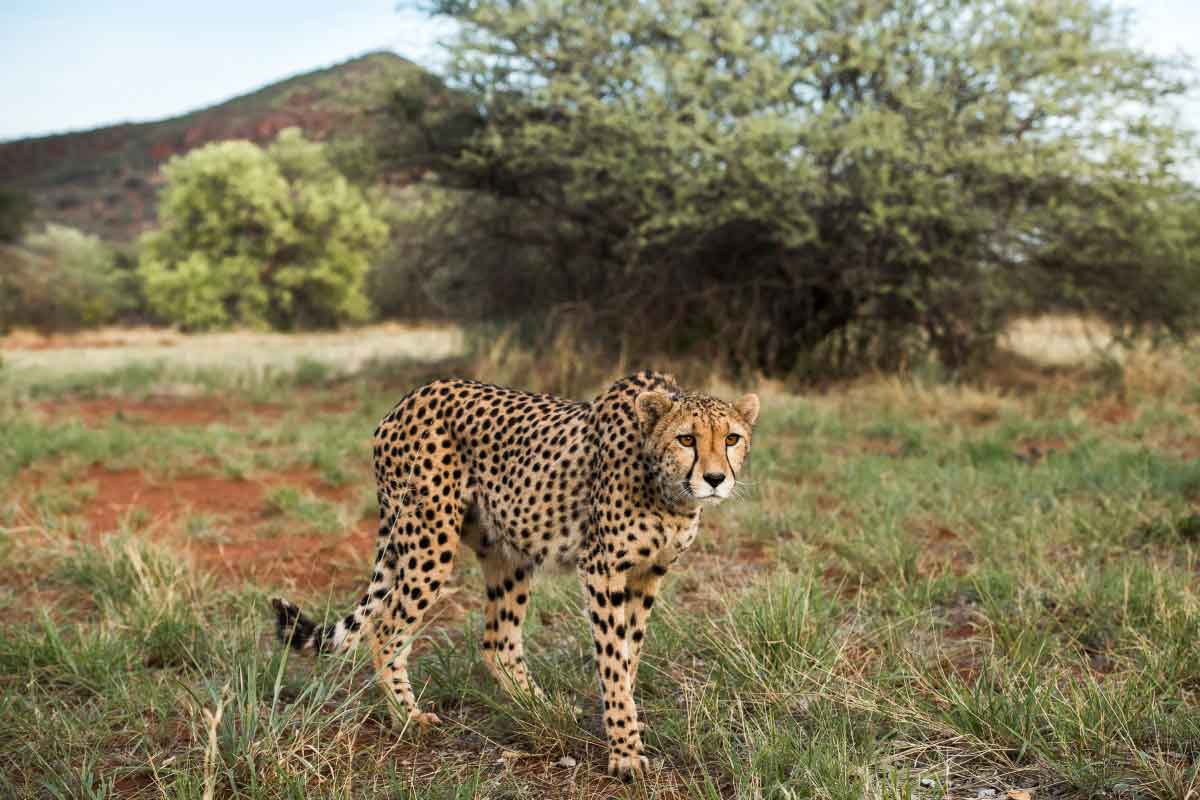
Namibia
Founded in 1991 and based on Okonjima Nature Reserve (a private reserve dedicated to conserving wildlife), The AfriCat Foundation is a vital research and education facility specialising in predators like cheetahs, leopards, wild dogs and lions. At AfriCat, there is no physical interaction with or handling of the cats. We love AfriCat because they make it possible for guests to have wild encounter safaris where they can see the cats close-up from specially built hides, as well as conducting thrilling guided nature walks to track the roaming predators. The hides are a photographer's dream – this is one of the best places in Africa to capture that winning portrait of a leopard or a classic yawning king of the jungle.
Gorilla Trekking
4. Spend Time With Gorillas

Uganda, Rwanda & Congo
Gorilla treks are a carefully managed activity that contribute directly to funding the conservation and research of these endangered great apes and their rainforest habitats. Encountering wild gorillas in Uganda, Rwanda or Congo is a truly unforgettable safari experience. After trekking through the forest footpaths in the care of a professional guide to find a wild gorilla family, you spend about an hour observing them from no less than seven metres (22 feet) away. Every effort is made to minimise the impact of human observers on the gorillas: you are not allowed to use a flash or cameras that make loud mechanical noises, no food or drink is allowed, and tour groups are limited to a maximum of six to eight guests. Gorillas are susceptible to human illnesses and a common cold can be deadly to them, so you are not permitted to trek if you are unwell and, in Congo, you must wear a face mask to further protect the gorillas.
What we love most about this remarkable animal encounter is that tourist treks contribute directly to the protection of the gorillas. Since trekking was introduced, mountain gorilla populations have stabilised in Uganda and Rwanda. Congo's Odzala-Kokoua National Park has also made successful strides in the conservation of western lowland gorillas in the Congo Basin.
Meet Meerkats
5. Interact With Meerkats
Botswana & South Africa
Meerkats are the comedians of the African savannah. In recent years these intelligent little suricates have become household names with their own reality show, the popular Meerkat Manor, and starring roles in countless TV commercials. Grown-ups and children love watching their antics and, since they are extremely sociable creatures, meerkat encounters are one of the best family-friendly wildlife encounters in Africa. We recommend South Africa and Botswana as the two destinations where you can interact with wild meerkats in child-friendly, meerkat-sensitive experiences, and where the activity supports research into the habituated meerkat population.
Whale Watching
6. Whale Watching by Boat

South Africa
South Africa's Whale Coast is famous for offering some of the world's best land-based whale watching when southern right whales migrate along the coast in very early spring (around August). The seaside town of Hermanus, just under two hours from Cape Town, is the world's whale-watching capital – it's sea-facing public areas are dotted with benches where you can take a seat and watch whales breaching, breeding and calving just offshore. Tourists can also take a boat cruise for a closer encounter. Strict conservation regulations are in place to stop boats from harassing the whales and passionate local citizens are quick to report any skipper who breaks the rules.
The best time for boat-based whale watching is between late morning and early afternoon when the ocean is flooded with direct sunlight, enticing the whales to the warmer surface water. Whale-watching tourism contributes directly to the local economies of former fishing villages, providing an incentive to protect the marine environment, which is good for all the creatures that depend on it, from seals to southern right whales.
Turtle Nesting & Hatching
7. Witness Marine Turtles Nest & Hatch

Indian Ocean Islands
This is one of our favourite, conservation-boosting, educational and once-in-a-lifetime safari experiences! Waiting patiently for baby turtles to hatch on a postcard-perfect tropical island beach, hearing the first shells crack and seeing the tiny hatchlings waddle determinedly towards the safety of the warm Indian Ocean, witnessing the bittersweet horror when one is snatched away by a gull and feeling the unadulterated joy when a tiny turtle makes it to the water – this is an experience that combines excitement, awe and a profound sense of connection with the natural world.
Africa's Indian Ocean beaches are home to five species of marine turtle: green, hawksbill, loggerhead, leatherback and the rare olive ridley. No matter how far the great ocean currents take them, turtles return to their matriarchal nesting grounds to lay their eggs and continue the cycle of life. Turtle tourism motivates local people to protect the nests and allow the turtles to lay their eggs in peace, instead of poaching them. Turtle encounters promote conservation, education and are ultimately essential to the long-term security of marine turtle breeding grounds.
Horseback Safari
8. Horse Riding With Rhinos

Kenya
The Ol Pejeta Conservancy in Kenya's alluring Laikipia region is home to the only two remaining northern white rhinos in the world, as well as over 110 critically endangered black rhinos. The conservancy's highly trained protection squads work closely with international veterinary experts to ensure that Ol Pejeta remains at the forefront of rhino conservation in East Africa. Guests at the conservancy can take the opportunity to visit a 2.8 square kilometre (1 square mile) rhino enclosure and learn about the incredible conservation efforts being taken to preserve the last of this highly endangered species. There is also an incredible opportunity to saddle up and ride among the rhinos. The enclosure is completely predator-free and fantastic to explore on horseback, giving you the chance to encounter endangered rhinos, Grévy's zebra and Jackson's hartebeest.
Chimpanzee Trekking
9. Assist in Habituating Chimpanzees

Tanzania
Rubondo Island is an unspoilt paradise located on Lake Victoria. The island's extraordinary natural bounty has attracted national park status and earned it the nickname, 'Noah's Ark'. It's home to a plethora of animals like hippos, crocodiles, monkeys, rhino, elephant and giraffe. Originally established as a haven for endangered species, the park became an important sanctuary for 16 chimpanzees rescued from European zoos between 1966 and 1969. This was the world's first successful attempt to rehabilitate captive chimpanzees, as they reverted to an unhabituated state characteristic of wild chimps.
Guests at Rubondo Island Camp can enjoy the once-in-a-lifetime experience of helping habituate the island's chimpanzees to humans. Be part of this ongoing conservation project as you walk through the forest tracking the chimps with your knowledgeable guide. The more the chimps grow accustomed to the presence of humans, the easier it will be for researchers to spend time with them. Not only is this project beneficial for the chimpanzees, it also has an incredibly positive impact on Rubondo Island's biodiversity, natural habitats, local economy, and longevity of being a vital wildlife sanctuary.
Ready to Plan Your Trip of a Lifetime?
Chat with someone who's been there. Get in touch with one of our Africa Safari Experts to help tailor-make an itinerary that's right for you:
Places to Play With Baby Elephants in South Africa
Source: https://www.go2africa.com/african-travel-blog/ethical-animal-encounters-africa

0 Response to "Places to Play With Baby Elephants in South Africa"
Post a Comment